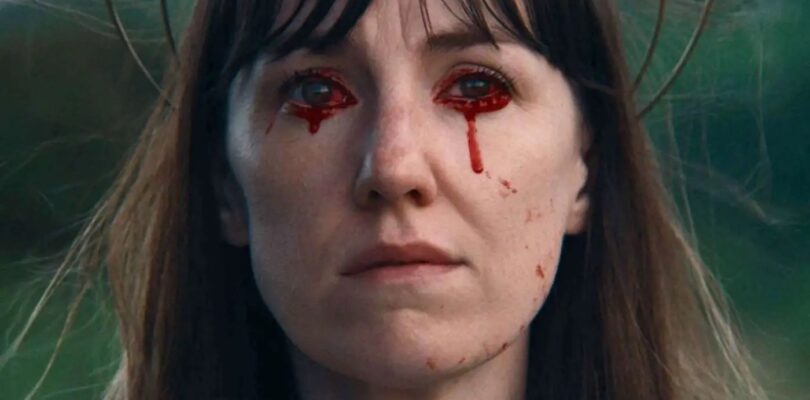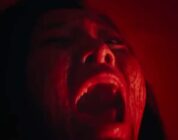Folk horror has seen an interesting change over the decades. Where the focus was first on people who were dealing with mysterious rituals and traditions, recent years has seen the sub-genre go all in on atmosphere while only paying lip service to the characters involved. This makes Frewaka something of a throwback. Even in its most confusing moments, the story always turns back to its characters.
Shoo (Clare Monnelly) is a primary care nursing student who is dealing with the loss of her estranged mother. She takes on a job to help a elderly recluse in a remote Irish village. Strangely, the woman seems to fear the residents of the village more than anything else. As Shoo develops a connection with Peig, she soon finds herself having to deal with her own trauma.
Imagery is an important part of Frewaka. Writer-director Aislinn Clarke interweaves the most striking shots with almost mundane slice of life moments. One moment will be spent in the idyllic village while the next will show a tree (the “fairy tree”, as the locals call it) adorned with various knick-knacks. This means that seeing a red door is enough to have audiences put their guard up. Sure the door is covered in metal, has a horseshoe on it, and nails at its base, but it is still just a door. And the decorations are all just a part of Peig’s superstitions anyway, right?
As the film progresses, Peig’s supposed paranoia passes on to Shoo. Before long, anyone watching Frewaka will begin to question everyone and everything. No one is to be trusted – including the protagonists. There is an oppressive tone to the movie due to the combination of scares and mental fatigue. And for all the frights, it may be the real life horrors that are most effective of all.
Frewaka is an atmospheric folk horror release that will terrify audiences on many different levels. The troubled characters and quaint countryside add a tension that will keep anyone watching riveted. Everything crescendos to an unsettling ending that is as impactful as it is horrifying.




